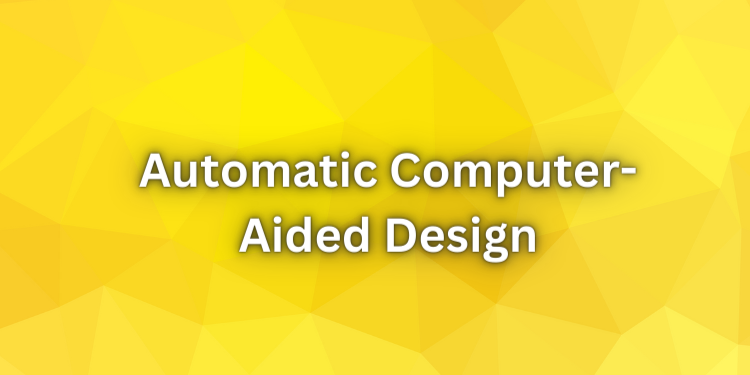AutoCAD dominates CAD software. AutoCAD has changed how architects, engineers, and designers build our world. What does AutoCAD full form? This article examines AutoCAD’s broad scope and its impact on many industries.
AutoCAD Full Form

AutoCAD stands for “Automatic Computer-Aided Design.” In 1982, Autodesk introduced AutoCAD, which revolutionized design and drafting. Since then, the program has matured and become essential in industries that require exact and detailed drawings, such as architecture, engineering, construction, manufacturing, and product design.
AutoCAD’s full form captures its powerful and indispensable ideas. Explaining each term:
Automatic: AutoCAD’s “Automatic” feature automates and streamlines the design process. Designers can automate numerous manual, error-prone operations with AutoCAD. AutoCAD automation features include drawing, editing, parametric modeling, and intelligent object snapping.
Computer-Aided: Refers to computers’ central involvement in design. AutoCAD lets designers use computers to boost creativity and productivity. Designers may easily generate and alter complex designs using AutoCAD’s precise tools and functions.
Design: AutoCAD revolves around “Design.” Designers can see, conceptualize, and communicate with AutoCAD. AutoCAD can model mechanical components and develop architectural blueprints. It helps designers create realistic, detailed models, encouraging creativity and problem-solving.
AutoCAD’s extensive feature set has made it an industry standard. Notable features:
2D and 3D Drafting: AutoCAD has powerful capabilities for creating accurate 2D drawings and 3D models. This allows designers to view their designs from many angles and generate realistic models.
Parametric Modeling: AutoCAD’s parametric modeling function lets designers define object connections and properties to create easily editable designs. Flexibility saves time and effort throughout design iterations and modifications.
Annotation and Collaboration: AutoCAD lets you add dimensions, text, and symbols to drawings for simple communication. It also boosts productivity and cooperation by letting numerous designers work on the same project.
Customization and Automation: Users can customize AutoCAD to meet their needs. Programming interfaces like AutoLISP and Visual Basic for Applications (VBA) let designers automate repetitive operations and increase productivity.
AutoCAD has far-reaching effects. This program is essential to industrial design and changed how buildings, bridges, products, and prototypes are developed. AutoCAD has shaped city skylines, mechanical assembly details, and product designs.
Conclusion
AutoCAD, short for “Automatic Computer-Aided Design,” has revolutionized design and drafting. AutoCAD has always advanced computer-aided design. Professionals in numerous industries use it because of its automatic features, computer-aided capabilities, and design focus.
